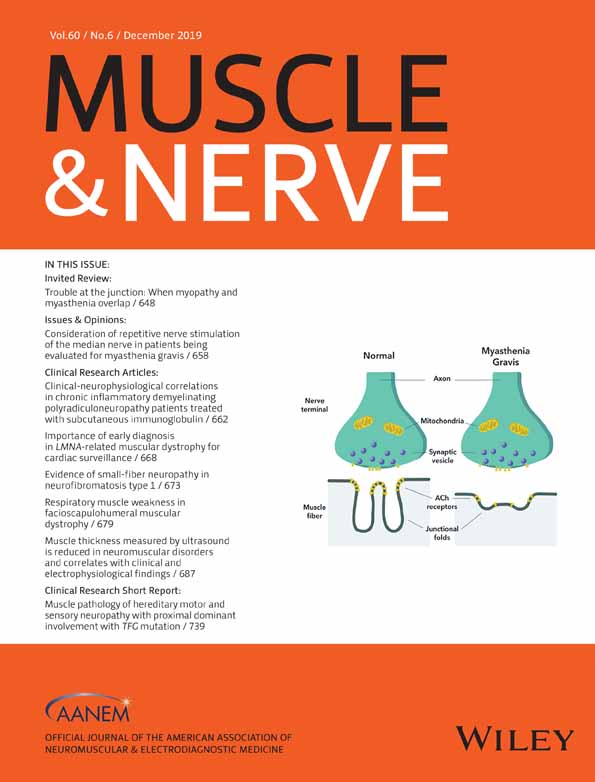Muscle thickness measured by ultrasound is reduced in neuromuscular disorders and correlates with clinical and electrophysiological findings
Abstract
Introduction
Nerve imaging has a limited role in axonal and muscle fiber loss. In this study, we sought to explore the utility of standardized muscle ultrasound (US) assessment in these clinical scenarios.
Methods
We performed a prospective study from March to August 2018 of patients attending the neuromuscular clinic. All patients underwent clinical evaluation and standardized muscle thickness measurement by US in seven muscles.
Results
The study cohort consisted of 114 participants, including patients with polyneuropathy, motor neuron disease, and myopathy. The smallest distal muscle thickness was found in patients with polyneuropathy, while the smallest proximal muscle thickness was found in patients with myopathy. Muscle thickness was strongly correlated with muscle strength (r 2 = 0.62), electrophysiological findings (r 2: 0.44-0.55), and disability score (r 2 = 0.53).
Discussion
Standardized muscle thickness measured by US shows diagnostic usefulness in a spectrum of neuromuscular disorders and correlates with clinical and electrophysiological findings.
CONFLICT OF INTEREST
All authors declare no conflicts of interest related to this report.




